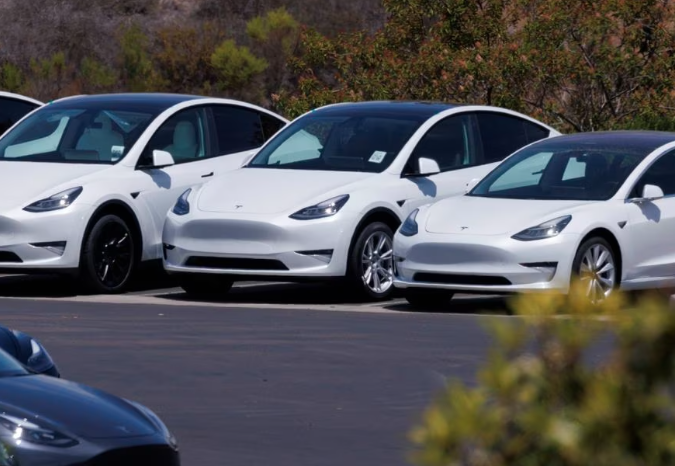Advanced economies alone can no longer determine climate outcomes. Emerging and developing economies – home to two-thirds of current emissions and most of the world’s biodiversity – are now the decisive arena. For these countries to transition to low-carbon, nature-positive development paths rapidly and at scale, climate and nature strategies must be embedded in mutually beneficial economic partnerships. This column introduces the third Paris Report from Bruegel and CEPR, which proposes a strategy designed to overcome the constraints of consensus-based global governance, and to create self-reinforcing incentives for transition.
In an era of geopolitical tension and fraying multilateralism (Baldwin and Ruta 2025), the world is falling behind on both climate and biodiversity targets. Yet the challenge is not only about ambition or finance gaps – it is about architecture. The Paris Report 2025, the latest product of a joint CEPR-Bruegel initiative, argues for a reimagined strategy: not global action through global governance, but through coalitions of the willing built around aligned interests in trade, finance, and industrial policy (Pisani-Ferry et al. 2025).
Advanced economies retain a vital role, but they alone can no longer determine climate outcomes. Emerging and developing economies (EMDEs) – home to two-thirds of current emissions and most of the world’s biodiversity – are now the decisive arena. These countries must transition to low-carbon, nature-positive development paths rapidly and at scale. But they face high capital costs, tight fiscal space, and urgent development needs. To succeed, climate and nature strategies must be embedded in mutually beneficial economic partnerships.
Drawing on contributions from a wide range of eminent global economists and experts, we propose a four-pillar strategy designed to overcome the constraints of consensus-based global governance, and to create self-reinforcing incentives for transition.
Pillar 1: A carbon pricing alliance with a shared border mechanism
Global carbon pricing remains fragmented. While over 75 carbon pricing instruments exist, only 1% of emissions are priced at levels consistent with 2°C. We propose a plurilateral climate coalition of advanced and emerging economies committed to a tiered carbon price floor, differentiated by income, and accompanied by a shared carbon border adjustment mechanism (CBAM).
This coalition would reward participation with mutual exemption from CBAM tariffs and it would offer support in the form of finance, technology, or market access. The EU’s own CBAM provides a natural entry point. Unlike the Paris Agreement, which rests on voluntary pledges, this approach would use reciprocity and trade incentives to anchor climate ambition. Importantly, this climate club must remain open. While the US has exited the Paris Agreement under the current administration, the coalition should welcome its eventual return. Meanwhile, alignment between the EU, China, and other large economies could lay a strong foundation.
Pillar 2: A climate finance coalition for EMDE power sector decarbonisation
The power sector in EMDEs must be rapidly decarbonised, but the investment gap is staggering. Annual clean energy investment in developing countries (excluding China) needs to quadruple by 2030. Yet the cost of capital in many EMDEs is at least two times higher than in advanced economies, making renewables artificially expensive despite plummeting technology costs.
We propose climate finance coalitions: agreements between subsets of advanced economies willing to provide funding, and EMDEs willing to commit to net zero-consistent power transitions. These mutual commitments are economically beneficial. In their contribution to the report, Bolton and Kleinnijenhuis estimate that, even excluding the US, a coalition of the EU, China, Japan, and South Korea could finance EMDE decarbonisation at a cost of less than 0.3% of GDP annually, while avoiding far greater climate damages. The 2025 UN climate summit (COP30) in Brazil, where new Nationally Determined Contributions (NDCs) will be submitted, is a crucial moment. Conditional offers of finance in exchange for credible power sector transition plans could help close the ambition gap.
Pillar 3: Green industrial partnerships
Europe is not well-endowed with renewable resources and will remain an energy importer. But rather than transporting green electricity across oceans, a more efficient model is to relocate energy-intensive production – like that of green ammonia or direct reduced iron – to renewables-auspicious EMDEs, and import the intermediate products.
This creates a new basis for green industrial partnerships. Such partnerships can support industrialisation in the South while bolstering energy security and price competitiveness in the North. Crucially, upstream energy-intensive production stages could shift to the South without significant loss of value added or employment in Europe. European industrial policy should favour downstream industry, not protect uncompetitive upstream stages. Trade and investment frameworks must be designed to embed EMDE producers into European value chains, ensure climate alignment, and deliver shared benefits.
Pillar 4: Scalable markets for carbon removals and nature protection
Net-zero targets imply net-negative emissions after mid-century. Yet carbon removals – whether technological or nature-based – remain marginal, fragmented, and poorly incentivised.
We propose two innovations:
- Cleanup certificates: Tradable permits for future carbon removals, embedded in emissions trading systems like the EU ETS. These would allow emitters to incur a carbon debt today, repaid through removals tomorrow, and financed at scale through market demand.
- Nature shares: A new class of financial asset that enables long-term investment in biodiversity-rich jurisdictions. Unlike current carbon offsets, which suffer from credibility issues and short-termism, nature shares would entitle investors to a stream of carbon and biodiversity dividends, priced transparently and governed publicly.
Such tools would allow markets to value nature as an asset rather than a liability, channelling funding into restoration and conservation, especially in biodiversity hotspots in the Global South.
A role for Europe
The EU is pivotal to this strategy. With a mature carbon market, regulatory credibility, and leadership on both climate and biodiversity frameworks, it can act as the anchor of these coalitions.
Europe must lead by example: tightening its own emissions trajectory, expanding CBAM to include more products, and offering credible financial and industrial partnerships. It should also catalyse the creation of a global architecture for carbon removals and biodiversity investment, building on the innovations proposed above.
From finance gaps to credible architectures
The climate and nature finance gaps are real – but citing ever-larger numbers is no longer sufficient. Without credible institutional pathways to close them, these figures risk becoming demobilising. As we write in the report, they can foster “a new form of denial, whereby the science is no longer questioned, but the policies are quietly abandoned”.
Instead, we must move beyond voluntary pledges and act on what is politically and economically feasible now. Coalitions of the willing – grounded in shared interests, not universal consensus – should accelerate action where it matters most.
Source : VOXeu





